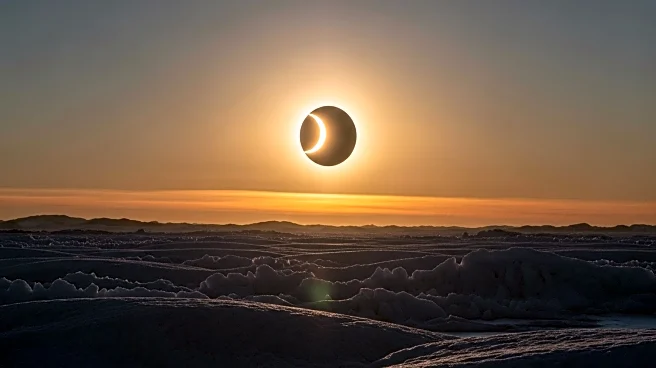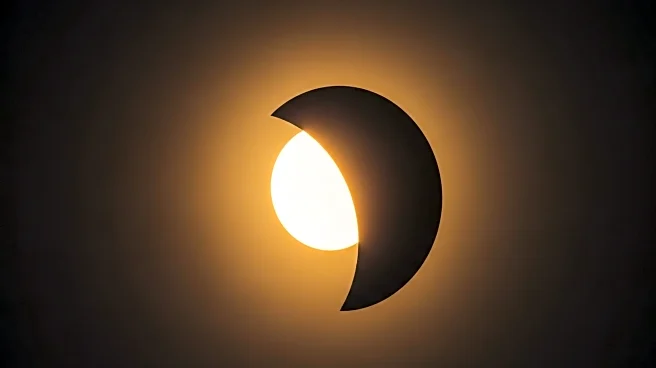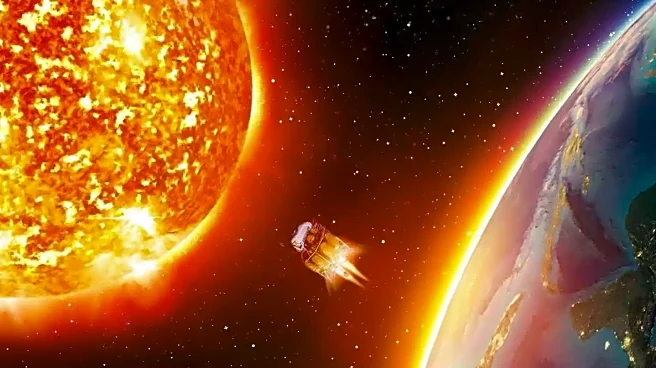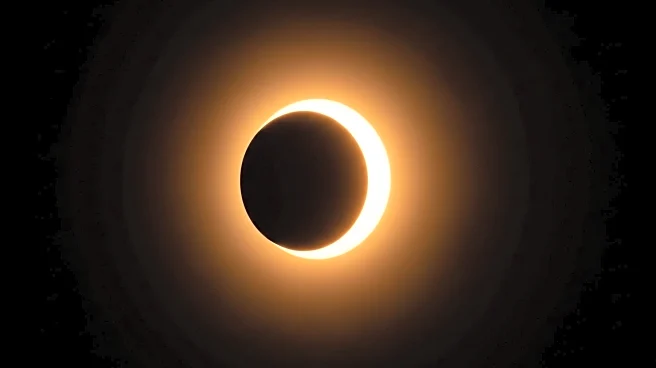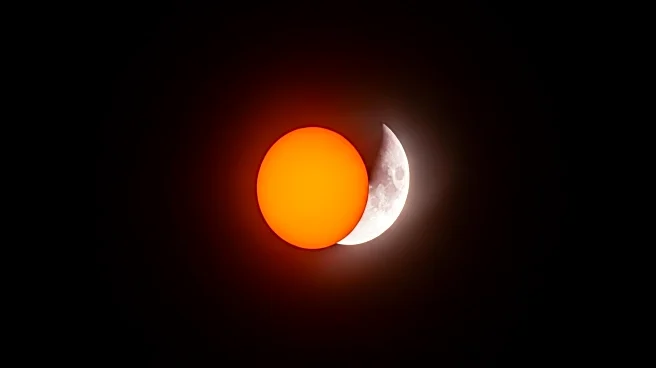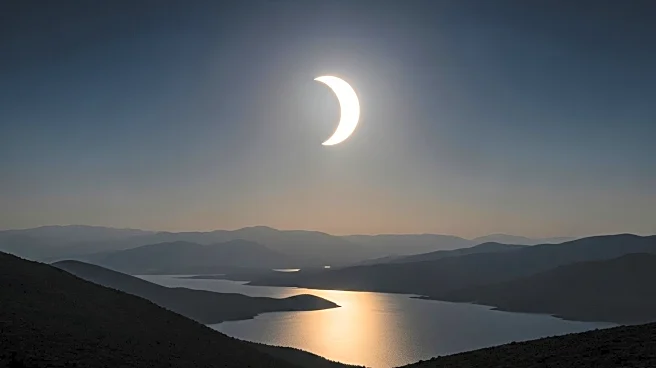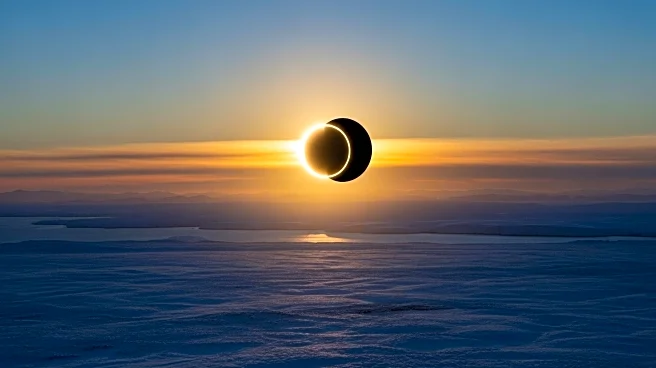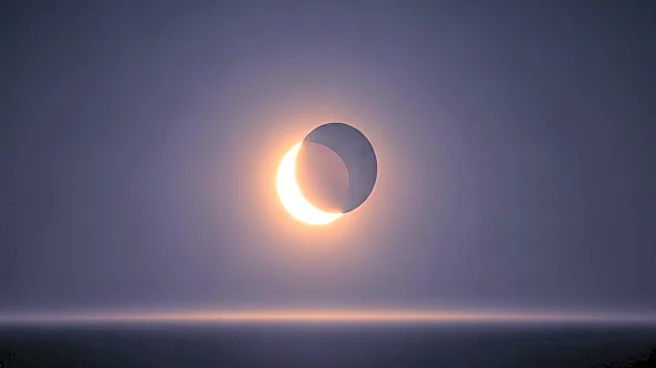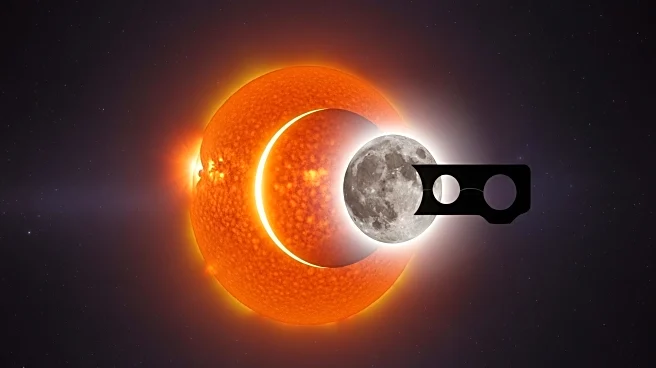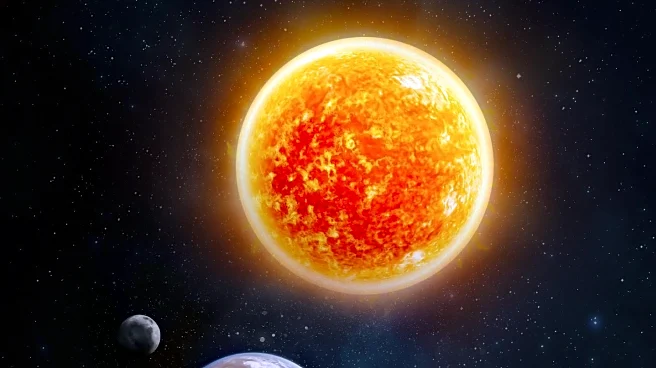What is the story about?
What's Happening?
The final solar eclipse of 2025 is taking place on Sunday, September 21. This partial solar eclipse will be visible in specific regions, including Antarctica, Australia, New Zealand, the Pacific Ocean, and the Atlantic Ocean. According to reports, the eclipse will be observable in Antarctica from 4:49 a.m. to 6:53 p.m. local time, in Australia from 6:13 a.m. to 7:36 a.m., and in New Zealand from 5:41 a.m. to 8:36 a.m. However, the eclipse will not be visible in India as it occurs after sunset there. Indian astronomy enthusiasts can still watch the event via online live streams.
Why It's Important?
Solar eclipses are significant astronomical events that attract skywatchers and scientists worldwide. They provide opportunities for scientific study and public engagement with astronomy. The visibility of this eclipse in regions like Antarctica and Australia highlights the global nature of such events, fostering international interest and collaboration in astronomical research. For regions where the eclipse is visible, it offers a chance for educational outreach and public viewing events, promoting science literacy and interest in space phenomena.
What's Next?
The next solar eclipse is scheduled for February 17, 2026, which will be an annular solar eclipse visible in Antarctica, with partial visibility in Africa, South America, and parts of the Pacific, Atlantic, and Indian Oceans. Later in August 2026, a total solar eclipse will occur, providing further opportunities for observation and study. These upcoming eclipses will continue to engage the global scientific community and the public, offering new insights into solar and lunar dynamics.
Beyond the Headlines
Solar eclipses also have cultural and historical significance, often associated with myths and legends across different societies. They can influence tourism, as people travel to regions where eclipses are visible to experience the event firsthand. Additionally, eclipses can impact solar energy production temporarily, as the Sun's light is obscured, highlighting the interconnectedness of natural phenomena and human activities.
AI Generated Content
Do you find this article useful?
